Unfortunately, only 30% of small businesses reach the 10-year mark. The rest fail. To survive, local businesses need to adapt to today’s digital-first marketing—where search, reviews, and mobile experiences drive discovery and decisions.
If you’re seeing a plateau or decline in sales, it’s time to refresh your marketing mix with tactics that meet customers where they actually spend time.
Even if your small business is profitable right now, you need to stay ahead of competitors to remain successful in the future.
This means analyzing the latest marketing trends and recognizing modern buying behavior. Whether your company is new or decades old, the goal is the same: build a durable, findable, and trusted brand in your local market.
Local businesses that have been around for years may need a marketing facelift, while new businesses often need a complete game plan. The following strategies reflect what works now—and what will keep working—so your business can thrive.
15 Steps to Promote Your Business Locally
We narrowed down the top 15 marketing tactics for local business owners. Use this guide as a reference for your next campaigns and daily operations.
- Set up your free listing with Google
- Start blogging
- Create short-form video content
- Give back to the community
- Run contests
- Verify your information on Yelp
- Implement a customer loyalty program
- Offer discounts
- Increase your social media presence
- Partner with a local influencer
- Set up a customer referral program
- Add subscribers to your email list
- Launch a mobile app
- Set up Google Alerts
- Improve your customer service
1. Set up your free listing with Google
How are new customers finding you?
If you’re old-school, you might rely on word of mouth, radio, print, and direct mail. Today, most people start with Google—often on their phones—then compare options by reading recent reviews, checking hours, and looking at photos.
That’s why you need to make sure your local business is listed on Google via a Google Business Profile (formerly Google My Business).

When people search for what you offer, they expect to find a complete profile—accurate NAP (name, address, phone), business category, and recent activity.
Setting up your free Google listing makes it easy for consumers to find you when they search for terms related to your business. Fill out every field and keep it updated.
Your listing should include:
- Address
- Phone number
- Hours
- Directions
- Link to website
Also add services, products, price ranges, attributes (e.g., “wheelchair accessible”, “women-owned”), service areas, and high-quality photos and videos. Post weekly updates and offers, enable messaging, and answer Q&A.
Customers can—and will—add photos and write reviews. Ask for reviews after great experiences, respond to every review, and keep your star rating strong by resolving issues quickly. Social proof in Google results heavily influences clicks and foot traffic.
Finally, learn how to get your customers to recommend your brand to others so reviews and referrals work together.
2. Start blogging
As you’ve seen, consumers use the Internet to find local businesses.
To rank, you need the basics of SEO and a helpful content plan. Focus your blog on specific questions customers ask, local topics, and comparison content that helps them choose confidently.
The top results on Google get the majority of clicks. A consistent, relevant blog increases your chances of earning those positions by targeting long-tail, intent-rich searches your service pages miss.
Blogging helps you publish fresh content regularly, which supports rankings and gives you assets to share in email and social.
Use posts to naturally include keywords people actually search (think problems, neighborhoods, and service types), and weave in internal links to core pages.
Over time, a steady readership returns to your site, engages with your brand, and converts more often. Add case studies, “before and after” galleries, pricing explainers, and FAQs—clear, human-first content beats fluff.
3. Create short-form video content
Short-form video (TikTok, Instagram Reels, YouTube Shorts) cuts through noise and showcases your people, results, and process in seconds.
Engage potential customers with quick tips, transformations, behind-the-scenes clips, and customer testimonials. Add location tags, on-screen captions, and a clear call to action (book, call, message).
These shareable videos drive awareness, profile views, and direct messages when done right—especially when you post consistently and join local trends or hashtags.
Repurpose the best clips on your website and Google Business Profile to keep those surfaces fresh and compelling.
4. Give back to the community
Being part of a local community also means giving back.
If you’re charitable, don’t be shy. Customers notice and appreciate businesses that support causes they care about.

Share what you’re doing and why. Community involvement improves brand perception, builds relationships, and often leads to press mentions and backlinks that help local SEO.
Ask your customers which local charities or school programs matter to them and involve them in voting or nominating opportunities.
It’s a safe bet to associate with local charities and civic events. Consistency beats one-offs—support a few causes year-round.
There are many ways to help: make annual contributions, run “% of sales” days, sponsor youth sports, donate services, or host fundraisers in your space.
Giving back doesn’t always mean cash. For example, restaurants can provide food for school events or first-responder appreciation days; service businesses can donate time and expertise.
5. Run contests
Contests are a great way to get people excited about your local business.
Run them on your social profiles and make entry simple (e.g., submit a photo, vote on a design, or share a story). Always include clear rules and an end date.
Prioritize user-generated content. Ask followers to post photos related to your business and tag you; pick winners by votes or a panel to balance fairness and reach.
The goal is to grow awareness and followers you can later convert with offers and helpful content—not just attract prize hunters.
Feature winners, thank participants, and turn the best entries into testimonials or gallery content (with permission).
6. Verify your information on Yelp
In addition to your Google listing, your business will have profiles on other platforms—sometimes created by customers.
For example, you may have a Yelp profile because customers rated and reviewed your business.
Make sure your store hours, phone number, address, and website are accurate on these platforms, then keep them in sync everywhere.
Yelp influences high-intent shoppers. Claim your page, add photos, complete your categories, and respond to reviews professionally.
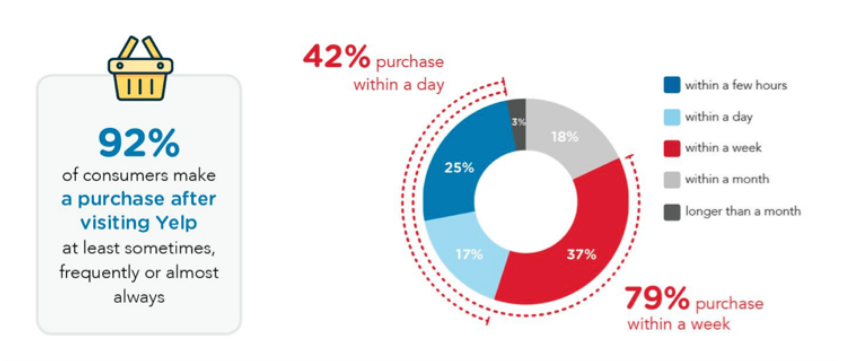
Don’t let wrong info cost you a customer. If someone calls a bad number or arrives to a closed store because of outdated hours, they may not try again.
Claim your business on Yelp so you can control your listing, and keep details consistent across other directories like Apple Maps, Bing Places, and Nextdoor.
7. Implement a customer loyalty program
If you’re looking for a fast way to increase sales, you need to learn how to create a customer loyalty program.
The best part: you grow revenue without acquiring new customers. Focus on increasing visit frequency and average order value with clear, attainable rewards.
The goal of your loyalty program should focus on two things:
- Increasing purchase frequency
- Increasing average purchase amount
Simple punch cards still work, but digital programs are easier to track and personalize. Offer birthday perks, tiered rewards, and limited-time boosters. Promote via email, SMS, and your Google and Yelp profiles.
Your loyalty program could be as simple as “buy 9, get the 10th free” or more advanced with tiers for your highest spenders.
Use a POS, app, or wallet pass to track points and redemptions without friction.
8. Offer discounts
Consumers are price-sensitive.
Recognize this and plan incentives that protect margins—think bundles, limited-time offers, add-ons, or new-customer promos.
If you worry discounts devalue your brand, design offers around value (e.g., free consultation, free dessert with entrée, free tire rotation with oil change) rather than blanket markdowns.
If needed, adjust base prices so occasional promotions remain profitable.
Customers want to feel like they’re getting a deal. Clear, time-bound offers create urgency and reduce comparison shopping.
If your business has ecommerce, an active code at checkout often nudges indecisive shoppers. Offline, use QR codes at the register to capture emails in exchange for a first-order discount.
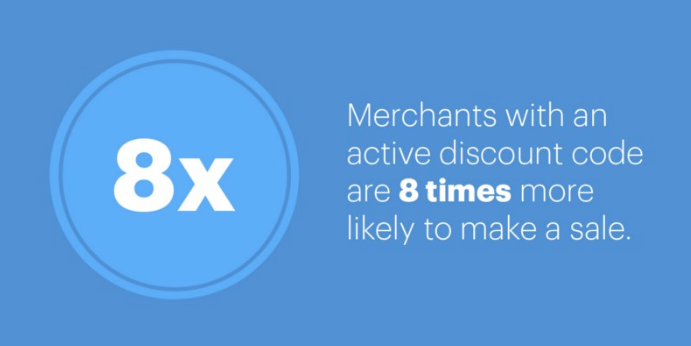
Whether you’re selling online, in-store, or both, test offers, measure redemption rates, and keep promos aligned with your loyalty program.
9. Increase your social media presence
We touched on social media for contests. Now make it a system.
Choose the platforms your customers use (e.g., Facebook and Instagram for most local B2C; LinkedIn for B2B; TikTok and YouTube Shorts for visual how-tos).
Post consistently, showcase your team, answer questions publicly, and highlight reviews and before-and-after results. Join neighborhood groups and local hashtags to get in front of nearby buyers.
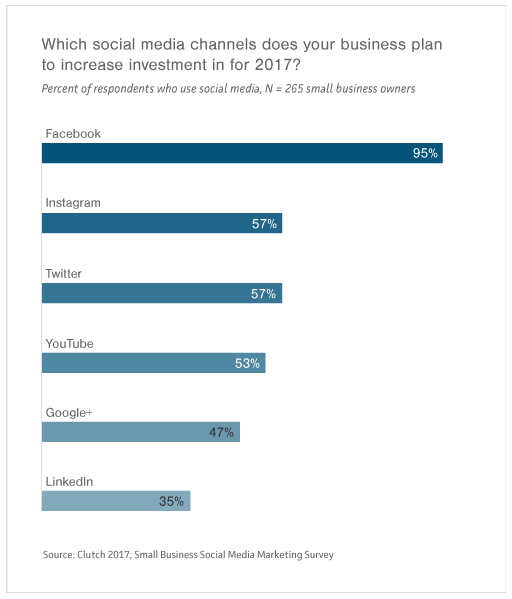
If you have a local B2B company, prioritize LinkedIn and industry Facebook groups; for B2C, lean into Instagram and short-form video. Track saves, DMs, and clicks—not just likes.
Only a fraction of small businesses show up daily. Be the one that does and your brand will stay top-of-mind.
10. Partner with a local influencer
To take your social strategy further, collaborate with local influencers and creators whose audience matches your customers.
These are community figures with engaged followings.
Pay them to promote your business on channels like YouTube, Instagram, and TikTok. Define deliverables (posts, stories, reels), timelines, and usage rights in advance.
This strategy can be cost-effective, especially with micro-influencers. Sweeten deals with free products/services and exclusive discount codes so you can track conversions.
Ensure proper ad disclosures (#ad) and give creators creative freedom—their audience trusts their authentic voice.
11. Set up a customer referral program
Implementing a customer referral program is one of the best ways to acquire new customers efficiently.
The idea: motivate happy customers to bring in friends by making it easy and rewarding.
Referrals compound the two biggest retail drivers—retention and acquisition—because trusted recommendations convert at high rates.
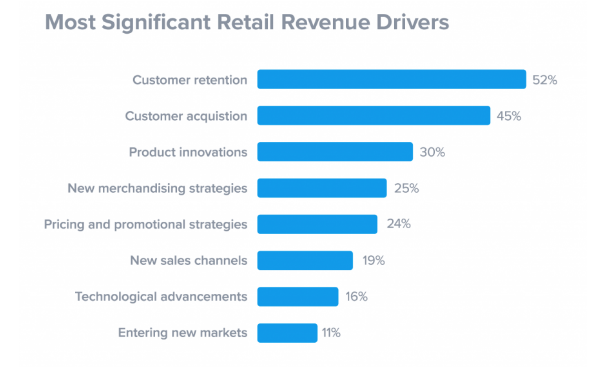
Offer a double-sided incentive (e.g., “Give $10, Get $10”). The inviter gets a reward after the friend purchases; the friend gets a first-order perk to try you out.
Promote referrals in-store, on receipts, in email, and on your site/app. Use unique codes or links to track results.
Keep the process simple. The easier it is to share, the more your customers will participate.
Simply put, referrals work—and they scale with your happiest customers.
12. Add subscribers to your email list
Don’t underestimate email marketing.
It isn’t the newest tactic, but it consistently delivers one of the highest ROIs when you send useful, segmented messages.
According to research, 81% of small business owners say email drives customer acquisition, and many use it to retain customers with ongoing value.
Automated and segmented flows (welcome, post-purchase, win-back, birthday) tend to outperform one-size-fits-all blasts.
But your email strategy won’t be effective if you don’t have subscribers.
Grow your list with in-store QR codes, website forms, Wi-Fi sign-ups, and loyalty enrollment. Always get permission, set expectations, and make it easy to unsubscribe.
13. Launch a mobile app
It doesn’t matter what type of business you have or what industry you’re in—your customers use mobile devices.
If you have the budget, consider launching a mobile app that adds real value: easy ordering/booking, saved preferences, rewards tracking, and push notifications.
Most mobile time is spent in apps, and customers prefer fast, convenient experiences—especially when rewards and payments are built in.
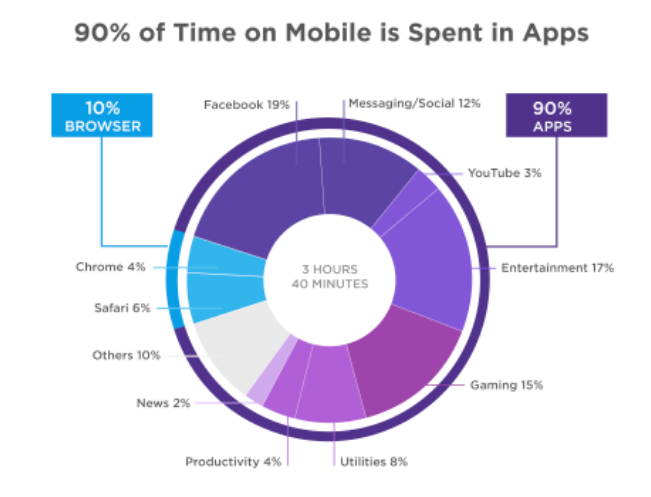
Many consumers favor apps over mobile sites for convenience and speed. If an app isn’t feasible yet, start with a mobile-optimized site, digital wallet passes, and SMS—then level up to an app when the use case is clear.
Once your app launches, personalize the experience, integrate loyalty and referrals, and use opt-in notifications thoughtfully (offers, reminders, and service updates).
If you already have an app or you’re building one, focus on usability and profitability—simplify navigation, reduce checkout steps, and track retention and repeat purchase rates.
14. Set up Google Alerts
Google Alerts helps you monitor what’s being said about your business online.
Reports are emailed to you anytime your business name or chosen keywords appear across the web.
This keeps you on top of news—positive or negative—so you can respond quickly and share wins.
If a blogger posts an unfavorable review, you’ll see it fast and can address it. If a local outlet writes something positive, amplify it on your site and social.
Set alerts for your brand, product names, key staff, competitors, and neighborhood terms to catch more mentions.
15. Improve your customer service
Your local business needs to provide excellent customer service:

How does great service help? It fuels reviews, referrals, and repeat business—the three pillars of local growth.
Prospective customers research you across Google, review sites, and social feeds. They notice how you respond, how quickly you help, and whether issues get resolved.
Set standards: answer calls and messages promptly, reply to every review, empower staff to fix problems on the spot, and follow up after service. Consistency across phone, web, and in-person touchpoints builds trust.
If you deliver reliably, it shows up in your online reputation. Your current customers keep coming back—and new ones choose you with confidence.
Conclusion
As a local business, you can’t afford to fall behind your competition.
Evaluate your current marketing and ask whether it’s producing measurable results.
If not, switch it up using this guide. Start with the essentials—Google Business Profile, reviews, content, and social—then layer in loyalty, referrals, and partnerships.
You don’t have to implement everything at once. Prioritize the tactics that match your goals and budget, and execute consistently. That’s how you build a strong, resilient local brand.
